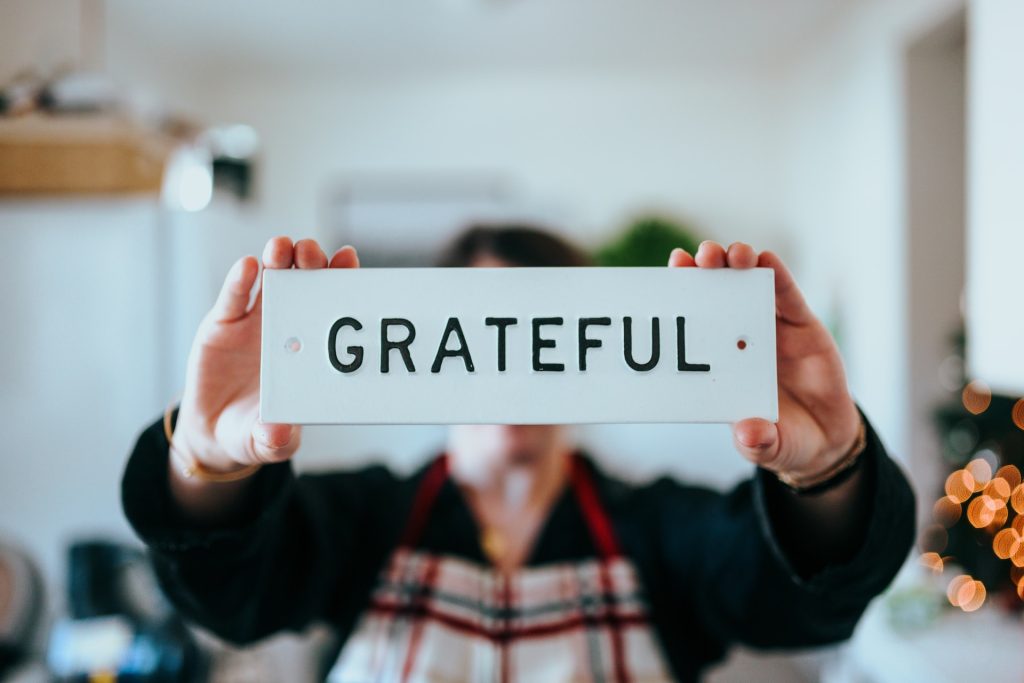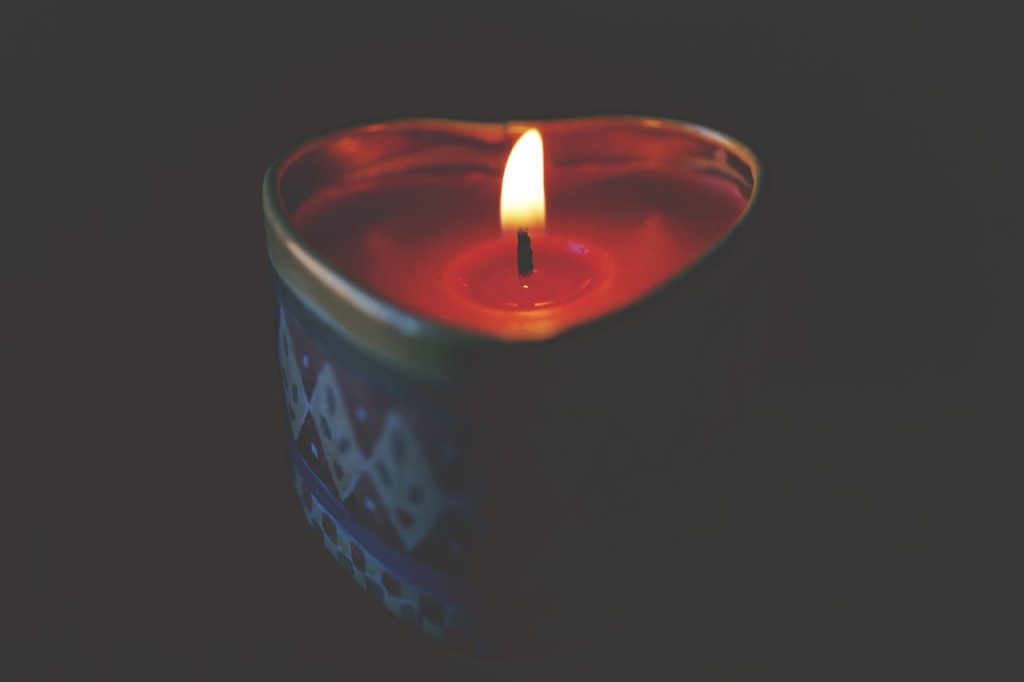The holiday season can be a wonderful time for gathering and celebrating with family and friends, but it can also be a source of much added stress. You may be fretting about any number of circumstances like: how to manage your weight or chronic condition like diabetes during all the “feastivities”; choosing the perfect gifts and worried if you can afford them; missing a loved one who can’t be with you or who has passed away; or perhaps you feel unwell or someone close has been diagnosed with a disease.

Whatever personal challenges you are experiencing, research shows that grateful people are happier and healthier; can make better decisions; and are more joyful(1). It’s a skill anyone can learn and benefit from and best of all, it’s free!
How it Works
An attitude of gratitude bolsters the feel-good neurotransmitters (brain chemicals) dopamine and serotonin. Feeling thankful and appreciative also boosts the love hormone oxytocin so we feel more connected while it decreases the stress hormone cortisol(2).
Our day-to-day lives are so busy that we often rush from one task to the next one without being mindful. Living in the fast lane thrusts us into a chronic state of stress, consistently raising cortisol levels that end up damaging our body cells, organs and systems. This is a major reason why stress is the silent killer that we all talk about but don’t take seriously enough.
Slowing down, taking a few deep breaths and being grateful moves us out of the sympathetic state or fight or flight mode and into the parasympathetic state of rest, digest, heal and repair. This is where our body and mind can relax and rejuvenate so we can sleep better and experience more energy and vitality. And who doesn’t want more healthy energy?!
Count Your Blessings
When we focus on what we have instead of what we don’t have, it puts us in a positive frame of mind. We become more content, satisfied and fulfilled. The ability to notice, appreciate and savor life’s moving parts grows gratitude for better physical and psychological well-being(1,3).
Grateful people count their blessings and look at their lives and experiences as gifts(1,3). We can shift our perspective and explore: “What is this difficult situation trying to teach me?” “What am I grateful for in this moment?”
When my family and I were recovering from chronic Lyme, we were all thankful for each other, the support of family and friends and for having the resources to pay for exorbitant out-of-pocket medical expenses. Gratitude played a starring role in our healing.
Mindfulness
Practicing mindfulness is an effective way to plug into the feeling of gratitude. Dr. Jon Kabat-Zinn defines mindfulness as “paying attention on purpose in the present moment, non-judgmentally…as if your life depended on it”(4).
When you think about it, all we really have is the present moment. Unfortunately, we spend a lot of time and waste precious energy worrying about the future or commiserating over the past. Focusing on the present moment helps us connect to each other, our thoughts and our own lives so we can become the best version of ourselves. Each day we have the opportunity to do and be better.

Cultivate Gratitude
When we are mindful we can be amazed by the power of breath, the body’s ability to heal itself from an infection or injury, the beauty of the blue sky, a pink sunrise or sunset, the miracle of a baby being born, the unconditional love of a pet, the plants and trees that clean the air and provide oxygen, the water that runs out of a faucet or down a cool Rocky Mountain stream… the possibilities are limitless.
Better Health
Scientific studies show that being thankful and appreciative is associated with less physical illness, fewer aches and pains; lower levels of stress, anxiety, and depression(3, 5); and fostering new and lasting relationships(6).
Being grateful also expands our scope of cognition so we can be more flexible and creative with our thinking and make better decisions. This makes it easier to cope with stress and adversity(1).
Unwrapping the Gift
When we are grateful and thankful, we tend to be kinder and more generous. Gratitude makes us feel good, so we want to do it again and again. The best part is that it’s easy to get started and can feel the benefits quickly. Research shows that you can start feeling better in as little as 2 weeks by writing in a Gratitude Journal(1).
Here’s How
Grab a notebook, pad or smart phone and each evening before bed, write 3 things you are grateful for. Write novel blessings, trying not to repeat the same ones, because the possibilities are endless. Practice this for 2 weeks and see what happens.
The best time to get started is now, in the present moment. Today, tell someone how grateful you are for them. You will be sharing a great gift.
Cate Reade, MS, RD is a Registered Dietitian, Exercise Physiologist and Functional Medicine Practitioner candidate on a mission to improve functional mobility and health span utilizing the power of lifestyle medicine. She has been teaching, writing and prescribing healthy eating and exercise programs for over 25 years. Today, as CEO of Resistance Dynamics and inventor of the MoveMor™ Mobility Trainer, she develops exercise products and programs that target joint flexibility, strength and balance deficits to help older adults fall less and live more.
References
- Emmons, R & McCullough, M (2003). Counting Blessings Versus Burdens: An Experimental Investigation of Gratitude and Subjective Well-Being in Daily Life. Journal of Personality & Social Psychology. www.greatergood.berkeley.edu.
- Gottfried, S (2016). www.saragottfriedmd.com/thanksgiving-what-gratitude-does-to-your-brain/
- Hill, PL et al (2013). Examining the Pathways between Gratitude and Self-Rated Physical Health across Adulthood. Pers Individ Dif. www.ncbi.nlm.nih.gov/pubmed/23139438
- Jon Kabat-Zinn, Ph.D. www.psychalive.org | videos
- Cheng, S et al. (2015) Improving mental health in health care practitioners: Randomized controlled trial of a gratitude intervention.” Journal of Consulting and Clinical Psychology. https://www.ncbi.nlm.nih.gov/pubmed/25222798
- Williams, L & Bartlett M (2015). Warm thanks: gratitude expression facilitates social affiliation in new relationships via perceived warmth. Emotion. www.ncbi.nlm.nih.gov/pubmed/25111881
